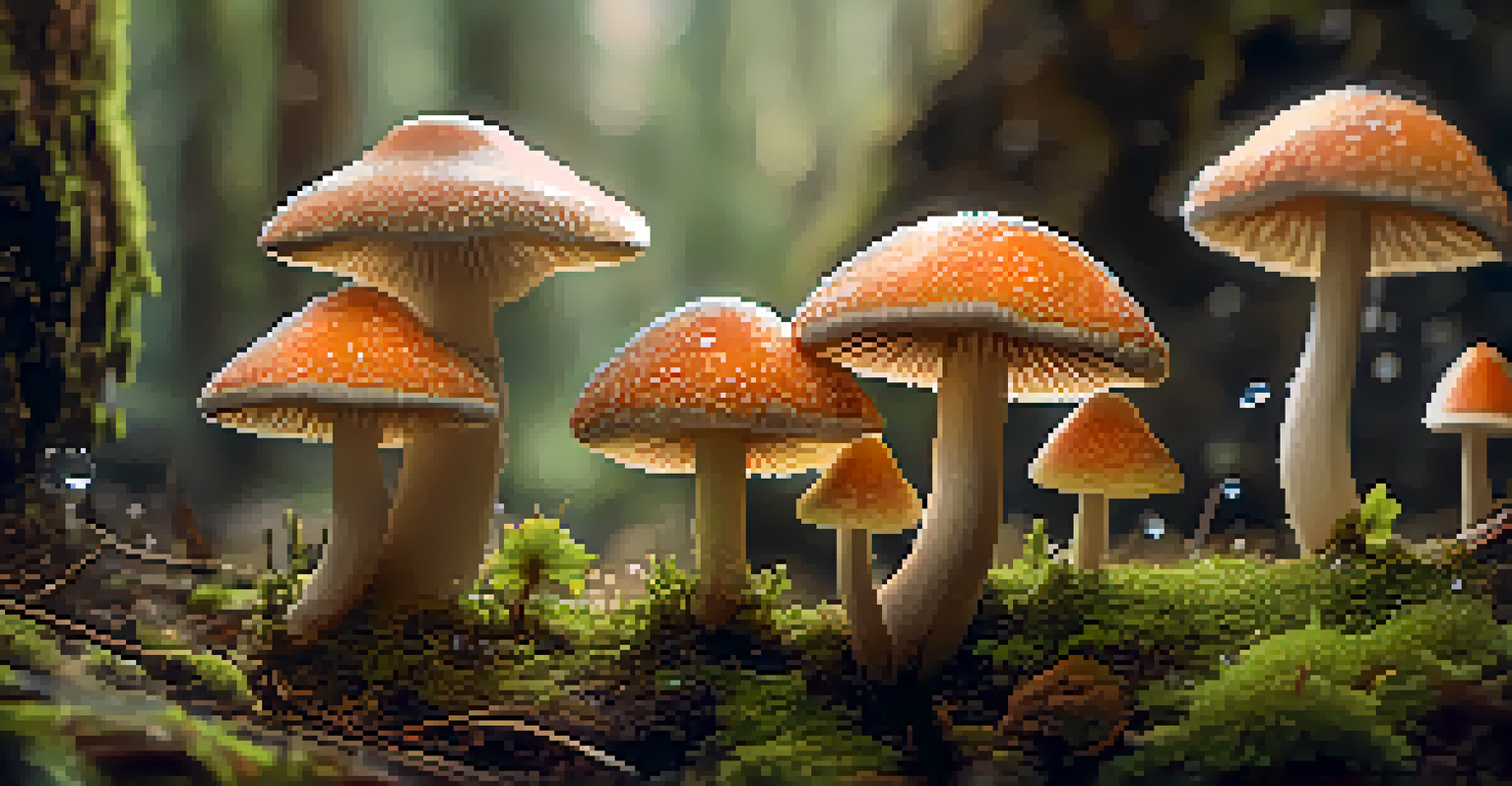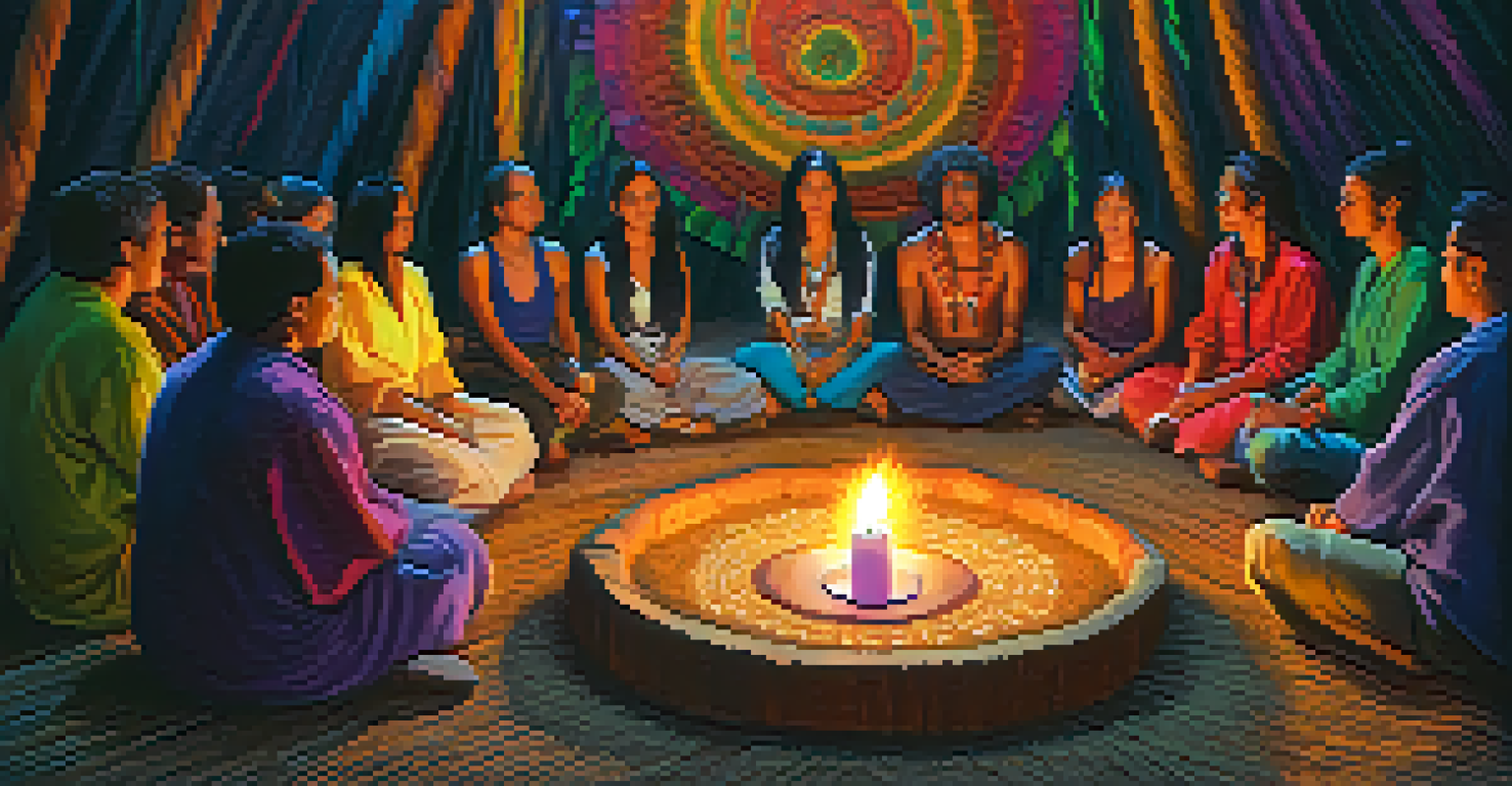The Role of Traditional Knowledge in Entheogen Research

Understanding Entheogens and Their Significance
Entheogens are substances that can induce altered states of consciousness, often used in spiritual or religious contexts. These natural compounds, like psilocybin mushrooms or ayahuasca, have been utilized by various cultures for centuries. Their significance extends beyond mere recreational use, as they often play a vital role in traditional healing and community practices.
The greatest enemy of knowledge is not ignorance, it is the illusion of knowledge.
In modern times, interest in entheogens has surged, particularly within the realms of psychology and medicine. Researchers are beginning to uncover their potential therapeutic benefits, such as treating depression, PTSD, and addiction. However, understanding these substances requires a deep appreciation of the cultural contexts in which they have been used historically.
This is where traditional knowledge becomes essential. The insights gained from indigenous practices provide a framework for responsibly and ethically studying entheogens. By grounding research in these time-tested understandings, scientists can ensure a more holistic approach to the exploration of these powerful compounds.
The Intersection of Traditional Knowledge and Science
Traditional knowledge refers to the accumulated wisdom and practices passed down through generations, often within indigenous communities. This knowledge encompasses not just the use of entheogens, but also their cultivation, preparation, and the rituals surrounding them. Scientists are increasingly recognizing the value of this knowledge in informing contemporary research methodologies.

For example, the way indigenous tribes prepare and consume ayahuasca is steeped in cultural significance that informs its effects. Understanding these practices can help researchers determine optimal dosages and combinations for therapeutic use. By integrating traditional practices with scientific inquiry, a richer understanding of entheogens can emerge.
Entheogens: Cultural and Healing Roles
Entheogens, like psilocybin and ayahuasca, have significant cultural and therapeutic roles, particularly in mental health treatment.
Furthermore, collaboration between indigenous communities and researchers can lead to mutually beneficial outcomes. This partnership fosters respect for cultural heritage while advancing scientific knowledge, paving the way for innovative therapeutic applications that are culturally sensitive.
Ethical Considerations in Entheogen Research
When engaging with traditional knowledge in entheogen research, ethical considerations must be at the forefront. This includes respecting the intellectual property rights of indigenous communities and acknowledging their contributions to the knowledge base. Without proper recognition, there's a risk of cultural appropriation, which can lead to mistrust and harm.
We do not inherit the earth from our ancestors, we borrow it from our children.
Moreover, researchers must ensure that the benefits of their work are shared with the communities from which the knowledge originates. This could mean offering financial compensation or involving these communities in the research process. By doing so, researchers can help preserve traditional practices while also advancing scientific understanding.
The importance of ethical engagement cannot be overstated. When done correctly, it not only enhances the credibility of the research but also builds a bridge of trust between scientists and indigenous people, fostering a collaborative spirit in the pursuit of knowledge.
Case Studies: Successful Integrations of Knowledge
Several case studies illustrate the successful integration of traditional knowledge in entheogen research. One notable example is the work being done with ayahuasca in the Amazon. Researchers have collaborated with indigenous healers to study its effects on mental health while honoring the cultural rituals surrounding its use.
Another compelling case is the research on peyote by the Native American Church. Here, scientists work alongside community members to explore its psychoactive properties for spiritual and healing purposes, creating a framework that respects and uplifts traditional practices.
Ethics in Research Collaboration
Respecting traditional knowledge and ensuring ethical engagement with indigenous communities is crucial in entheogen research.
These examples highlight the potential for synergistic partnerships, where both traditional knowledge and scientific inquiry can thrive. By learning from each other, researchers can develop more effective treatments while preserving the cultural significance of these powerful plants.
Challenges in Bridging Traditional and Modern Practices
Despite the promising collaborations, there are significant challenges in bridging traditional and modern practices. One major hurdle is the differing worldviews; traditional knowledge often emphasizes holistic and communal approaches, while scientific inquiry tends to be more reductionist and individualistic. This can create misunderstandings and hinder effective collaboration.
Additionally, the commercialization of entheogens poses a risk to traditional practices. As these substances gain popularity in Western contexts, there's a danger that their cultural significance could be overshadowed by profit-driven motives. This can lead to exploitation of indigenous cultures and their knowledge.
To overcome these challenges, open dialogue and education are essential. By fostering mutual respect and understanding, both traditional and scientific approaches can coexist and contribute to a more comprehensive understanding of entheogens.
Emerging Trends in Entheogen Research
As interest in entheogens continues to grow, several emerging trends are shaping the field of research. One such trend is the increasing focus on the therapeutic potential of these substances, particularly in mental health treatment. As more studies are conducted, the scientific community is beginning to validate the benefits long recognized by traditional users.
Another trend is the rise of community-based research, where indigenous voices are at the center of the inquiry process. This participatory approach not only respects traditional knowledge but also empowers communities to take an active role in the research that affects them. By prioritizing their insights, researchers can create more effective and culturally relevant interventions.
Future of Research Looks Promising
The future of entheogen research is bright, with potential for innovative treatments through collaboration between scientists and indigenous communities.
Lastly, there's a growing recognition of the importance of sustainability in entheogen practices. With the increasing demand for these plants, researchers and communities are working together to ensure that harvesting methods are sustainable and do not harm the environments in which these substances grow.
Future Directions for Entheogen Research
Looking ahead, the future of entheogen research appears promising, especially with the ongoing integration of traditional knowledge. As scientists continue to work alongside indigenous communities, new avenues for exploration and understanding will undoubtedly emerge. This collaboration can lead to innovative treatments and a deeper appreciation of the cultural significance of these substances.
Moreover, as regulatory landscapes evolve, there may be more opportunities for clinical studies that incorporate traditional practices. This can help bridge the gap between scientific validation and cultural relevance, ensuring that both perspectives are honored.

Ultimately, the future of entheogen research hinges on respectful collaboration and ethical engagement. By fostering a spirit of partnership, we can unlock the full potential of these remarkable substances while honoring the rich traditions that have guided their use for generations.